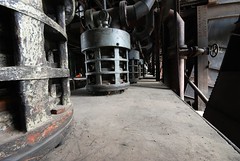
Wales has a rich mining heritage that could offer the perfect excuse to look into activity holidays for families in this part of the UK. The principality's 12-stop underground trail - which runs from the north of the region right down to the southern coast - provides some fascinating insights into the local history of the slate, coal and metals mining sector.
Wales's mining history stretches back centuries - men first started looking at ways of exploiting its rich natural resources 3,500 years ago.
If you choose to follow the underground trail from north to south, your first stop will be the Great Orme Mines in Llandudno. The next part of the trail is the Welsh Slate Museum in Llanberis, Caernarfon, which forms part of the National Museum of Wales and explores the history of Dinorwig Quarry. Its location near Snowdon means visitors can indulge themselves in leisurely walks around Padarn Country Park after touring what remains of the slate quarry.
Heading further south, the next stop on the underground trail is the National Showcaves Centre for Wales in the Brecon Beacons National Park. This attraction delves into Welsh coal mining history and recreates aspects of a working coal mine. Finally, the last stop on the trail is the Big Pit, which is also known as the National Mining Museum of Wales and explores coal mining history further.
Coalworkers' Pneumoconiosis
Coalworkers' Pneumoconiosis, also called Black Lung Disease, is a serious medical condition experienced by many coalworkers after years of exposure to coal dust. When coal dust enters the lungs, microscopic bits of coal become lodged in the lungs' delicate alveoli, reducing the sufferer's ability to breathe over time. In time, sufferers experience decreased lung function, pulmonary hypertension, and progressive massive fibrosis. Although extensive coal mining operations had existed in West Virginia, Pennsylvania, and elsewhere, no one had yet proven a definitive connection between coal dust inhalation and the wide range of symptoms it causes. For a long time, it was believed that only silica dust inhalation was dangerous, and coal miners are often exposed to silica dust as well. Eventually, however, a connection was established to coal dust, and in 1969, Congress finally passed the Federal Coal Mine Health and Safety Act.
Are Coal Miners Responsible Human Beings?
Example: You're a coal miner in West Virginia. There's no food here, nothing grows here, nothing's going to EVER grow! Would a coal-miner's canary, given the choice, stay down there amid the toxic fumes if it had a choice?